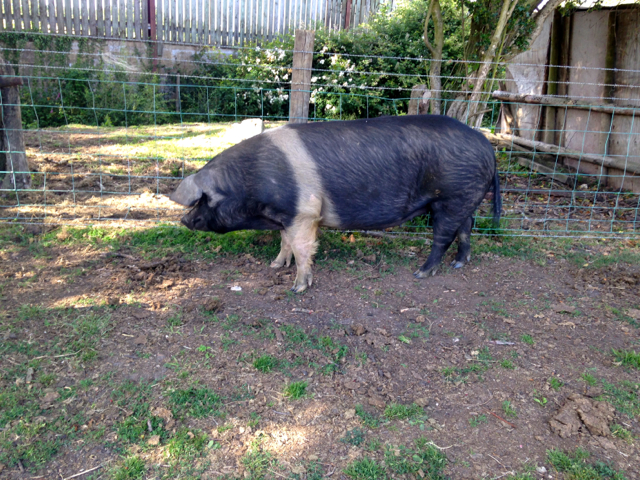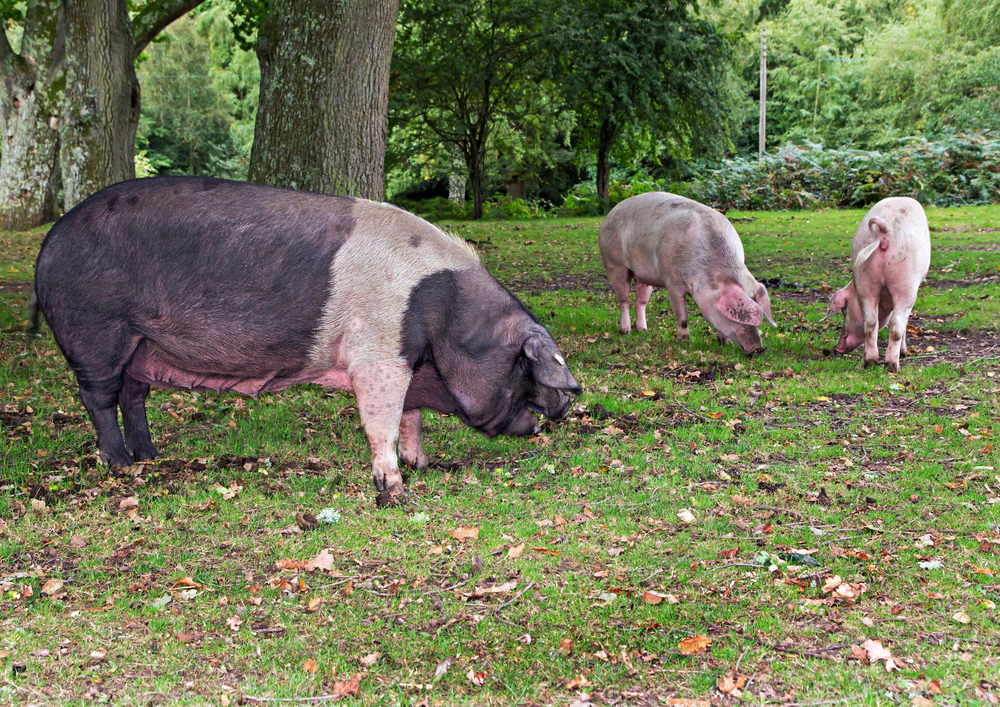
The sight of pigs during pannage season is highlight of autumn in the New Forest.
During pannage season pigs undoubtedly become the favourite animal to see in the New Forest. There is nothing quite like the sight of happy porkers that have been set free to root about through the fallen leaves and undergrowth, in their search for food. They provide a very important service at this time of year by eating the green acorns that are toxic, when eaten in quantity, to the other commonable animals. Through their voracious foraging the pigs reduce the risk of poisoning occurring in the free roaming ponies and cattle. In 1809 it was reported that two enterprising brothers had found a further use for the Forest pigs, by training a black sow how to detect game and to back and stand. Richard and Edward Toomer lived seven miles apart, one in Broomy Lodge and the other in Rhinefield Lodge. As well as being Forest Keepers they had a great interest in breaking and training pointers and setters, some of their own breeding and others that were sent to them by sporting gentlemen. Apparently the pig developed a partiality for a litter of pointer puppies and would play with them and share their feed. As several of the dogs that were in for training showed little interest in their work, Richard Toomer reckoned that having broken many a dog as obstinate as a pig, he would try to see if he could not succeed in breaking a pig. She was given the name Slut, ‘in consequence of soiling herself in a Bog’ and within a day could respond to her name.
Porcine hunting prowess
Within two weeks, the sow could find and point partridges or rabbits, and soon after that she could detect grouse, pheasants, and snipes. Her hunting prowess rivalled that of any dog, although for some reason she was never known to point a hare. However in the field she was said:
She always expressed great pleasure when Game, either dead or alive, was placed before her. She has frequently stood a single Partridge at forty yards distance, her Nose in a direct line to the Bird; after standing some considerable time, she would drop like a setter, still keeping her Nose in an exact Line, and would continue in that Position until the Game moved: if it took wing, she would come up to the place and put her Nose down two or three times; but if a Bird ran off, she would get up and go to the place, and draw slowly after it, and when the Bird stopped she would stand it as before.
Her pace was mostly a trot, and she was seldom known to gallop, except when called to go out shooting. She was never shut in but apparently responded to the call of the whistle as eagerly as any dog.
Pig-pointers
She was five years old when Richard, her master, died and she was sold at auction for ten guineas, along with his pointers and setters. At the age of ten she was again sold. By this time she weighed 700 pounds (approximately 317 kg) and was described as ‘fat and slothful’, but she could still find game as well as before. Accounts differ as to the identity of her new master. One names, Mr Sykes of Brookwood, in the New Forest, and others Colonel Sykes of Basildon House, Berkshire. However, in all accounts the result for the sporting pig was the same – she was sent for slaughter. One commentator described her shameful death as ‘Animal Murder’ because ‘it would have cost but a trifling Sum to have fed and sheltered her in the Winter, and the Park [either in the New Forest or at Basildon] would have supplied her Wants during Summer at no Expense’. It was wondered that no one had since attempted to train a pig to ‘Dog and Gun’, as being accompanied by a brace of pig-pointers would have been quite a novelty in an age that valued innovation.

During pannage season, pigs provide a very important service by eating the green acorns that are toxic, when eaten in quantity, to the other commonable animals, such as cattle and ponies.
Sources:
The Literary Panorama, Vol. VI, London, 1809, pp. 443-444
The Gentleman’s Magazine, From January to June, 1810, Vol LXXX, London, pp. 43-44.
Rev William Barker Daniel, Rural Sports, Vol. 3 (London, 1812).


You must be logged in to post a comment.